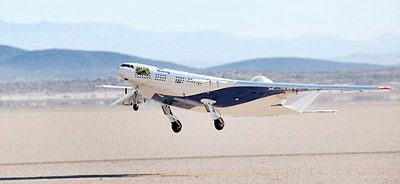Sunday Times 2
A U-2 flight that nearly sparked a nuke war
WASHINGTON (AFP) – At 9:09 am on October 27, 1962, Major Rudolf Anderson climbed into the cockpit of his U-2 spy plane for a flight that nearly triggered a nuclear apocalypse.
Five days earlier, president John F. Kennedy had revealed evidence that the Soviets had deployed nuclear missiles in Cuba, setting off a harrowing war of nerves that threatened to push the world into nuclear armageddon.
But by the morning of Anderson’s mission, a way out of the crisis appeared to emerge after Soviet leader Nikita Khrushchev floated a secret proposal to withdraw the missiles in return for an American promise not to invade Cuba.
It was the fifth mission over Cuba for the 35-year-old Anderson, decorated as a pilot in the Korean War. Only 13 days earlier, another U-2 detected Soviet ballistic missiles on the island, setting off alarm in Washington.
After taking off from a base in Orlando, Florida and reaching an altitude of 72,000 feet (22,000 meters), Anderson was tasked with using the U-2′s high-powered cameras to photograph Cuban and Soviet deployments near the US naval base at Guantanamo Bay. He was also ordered to “probe” Soviet air defences.
The Soviets had set up 24 sites across Cuba with V-75 surface-to-air missiles, the same defenses that had brought down a U-2 plane flown by Francis Gary Powers over the Soviet Union in 1960.
Unlike previous days, the Soviets switched on their air defence radars, after being pushed by Fidel Castro the day before to stand ready for a potential American attack.
The fiery Cuban leader was convinced a US invasion was imminent and was fed up with American reconnaissance aircraft violating Cuban air space, according to Michael Dobbs in his chronicle of the Cuban missile crisis “One Minute to Midnight.”
Soviet General Stepan Grechko, in charge of Soviet air defences in Cuba, worried the Americans would have photos showing the secret locations of tactical nuclear missiles near the Guantanamo base.
“Our guest has been up there for over an hour,” Grechko told his superior. “I think we should give the order to shoot it down, as it is discovering our positions in depth.” At 11:16 am, the general issued the order: “Destroy Target 33.”
Three minutes later, two V-75 missiles slammed into the U-2 plane near Banes in the north of the island. A section of the charred fuselage, containing Anderson’s body, was later found in a sugarcane field.
In Washington, the outlook had turned increasingly bleak: Krushchev had come up with a new proposal, issued publicly this time, to pull out missiles from Cuba in exchange for American missiles stationed in Turkey.
Kennedy was meeting with his top advisers and debating how to respond to Moscow when he was informed at 2:03 pm that Anderson’s U-2 plane, serial number 56-6676, had not returned from its mission over Cuba.
The situation was all the more alarming as 20 minutes earlier, another U-2 aircraft had gone missing after heading to the North Pole. The plane strayed into Soviet air space, and six Soviet MiG-21 fighters were in pursuit, according to documents uncovered by Dobbs.
Disturbed by the news, the president told his advisers the shootdown over Cuba was an apparent “escalation” by Moscow.
His hawkish assistant defence secretary, Paul Nitze, called it an opening salvo. “They’ve fired the first shot,” he said.
After learning of the downed plane, top military generals, who stood ready to order an invasion of Cuba, proposed retaliating by bombing the island’s air defences.
In Moscow, it was nighttime when Khrushchev learned of the U-2 plane shot down over Cuba. He speculated whether his American counterpart would be able to “stomach the humiliation” of losing the aircraft. Although he had authorised commanders in Cuba to fight back in self-defense, Khrushchev never ordered attacks on unarmed reconnaissance planes.
The two sides sensed they were approaching a point of no return.
At 8:00 pm, Robert Kennedy, the president’s brother, met with Soviet ambassador Anatoly Dobrynin. They managed to work out a compromise, and the crisis was resolved. After 13 days on the brink, Anderson remained the only victim of the Cuban missile crisis.
Follow @timesonlinelk
comments powered by Disqus





















